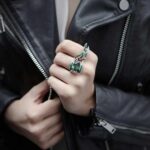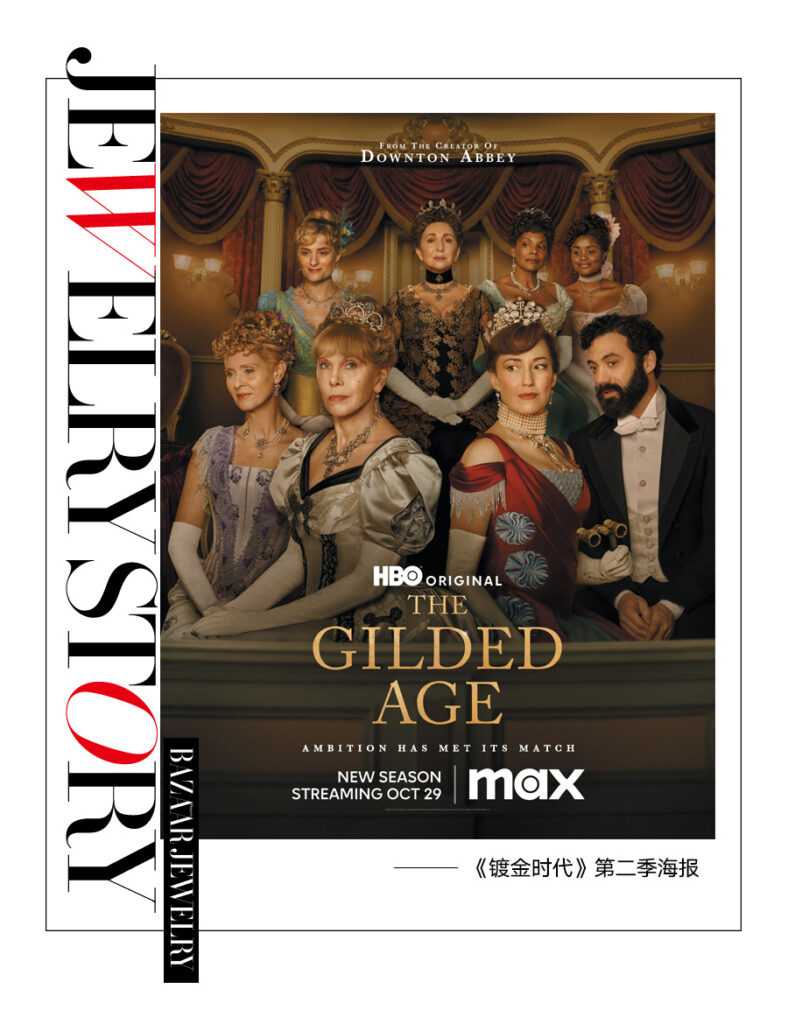
The second season of “The Gilded Age” has concluded, with the conflict between New York’s old money elite and nouveau riche intensifying. This season ended with a victory for Mrs. Russell, representing the new money, in the “Opera War.” Naturally, these heated battles often unfold during grand balls and dinners, providing ample opportunity for status-affirming jewelry to take center stage.
How do you view their battle of taste? With the series’ popularity, might some antique jewelry styles make a comeback? What legendary jewelry pieces from this historical period are worth exploring in depth?
America’s “Gilded Age” refers to the 30-year period from 1880 to 1910, characterized by rapid industrialization, economic growth, and prosperity for the wealthy.
The swift progress of the Second Industrial Revolution led to the emergence of a monopolistic class. During this time, many businessmen amassed fortunes by controlling entire industries. Famous monopolists from this era are still household names today, including J.P. Morgan (banking), John D. Rockefeller (oil), Cornelius Vanderbilt (railroads), and Andrew Carnegie (steel).
Old money, on the other hand, refers to those who established their wealth foundations during America’s founding. They typically wielded extraordinary influence in real estate and politics. In “The Gilded Age,” the old money camp is led by the renowned Mrs. Astor, whose family was among the first Dutch shipping families to arrive in America, while the Astor family she married into built their wealth on real estate.
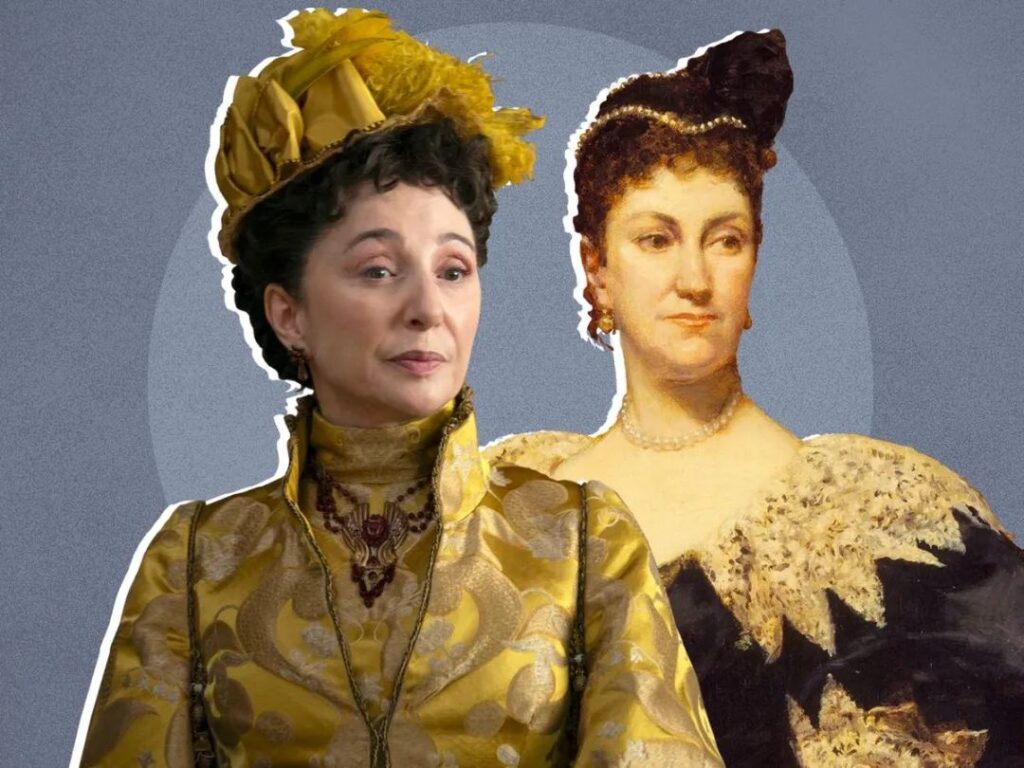
The series’ protagonist, Mrs. Russell, representing new money, is based on Mrs. Vanderbilt, whose family made their fortune in railroads. It’s worth noting that during this period, America’s railroad system expanded extensively, laying 170,000 miles of track and building a transcontinental railway system. Consequently, much of the business warfare in the series revolves around railroad construction.
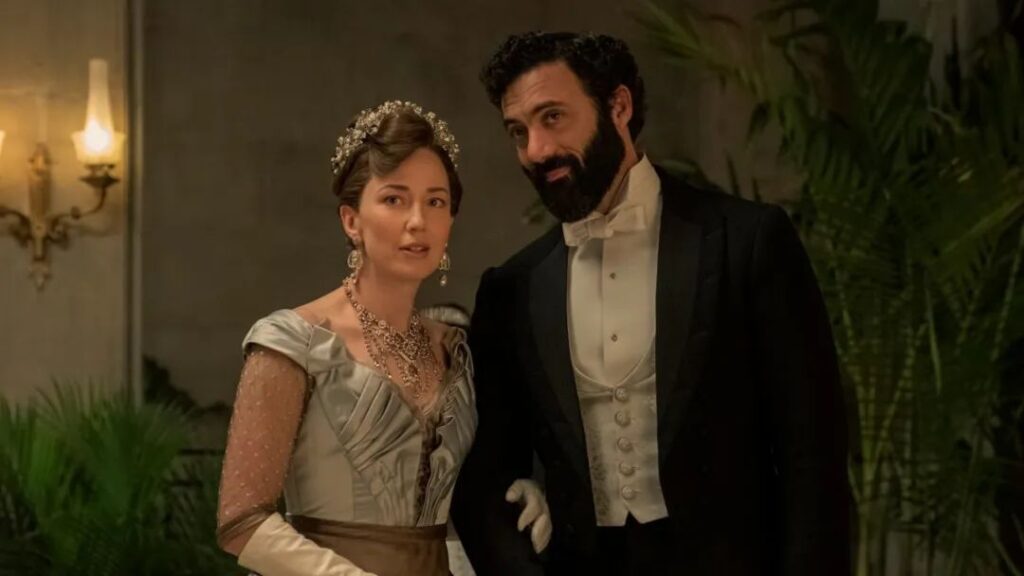
What’s interesting about this series is that, except for Mrs. Russell and her main antagonist Mrs. Agnes van Rhijn, who are fictional characters, the other character settings are based on real historical figures, such as Mrs. Astor and the Duke of Buckingham. The costume and set designs are also relatively historically accurate, although sometimes a bit exaggerated.
Overall, the tone is well-captured, which is unsurprising given that it’s created by the same team behind “Downton Abbey,” who are professionals at historical dramas.
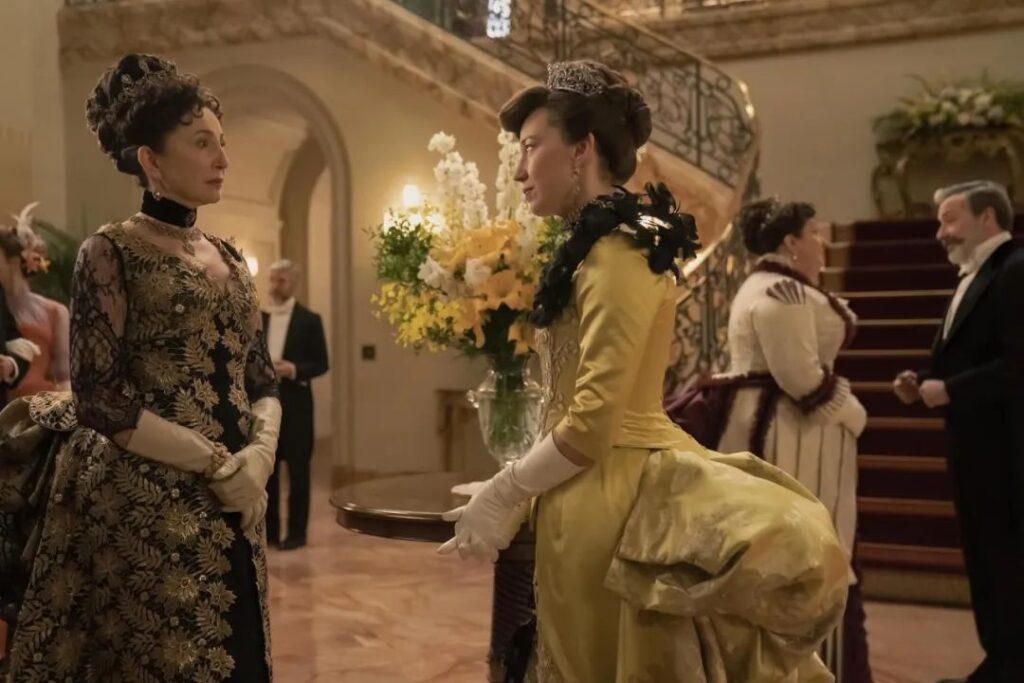
The production team reportedly hired a dedicated researcher to create a library of approximately 36,000 images, collecting relevant visuals of clothing, artworks, interior decorations, jewelry, and portraits from 1877 to 1900.
Kasia Walicka-Maimone, the series’ lead costume designer, stated, “We looked at countless paintings and quickly created the key to approaching this period. However, we knew we weren’t making a documentary. We needed to create new materials and stories while staying within the framework of that era and drawing inspiration from it.”
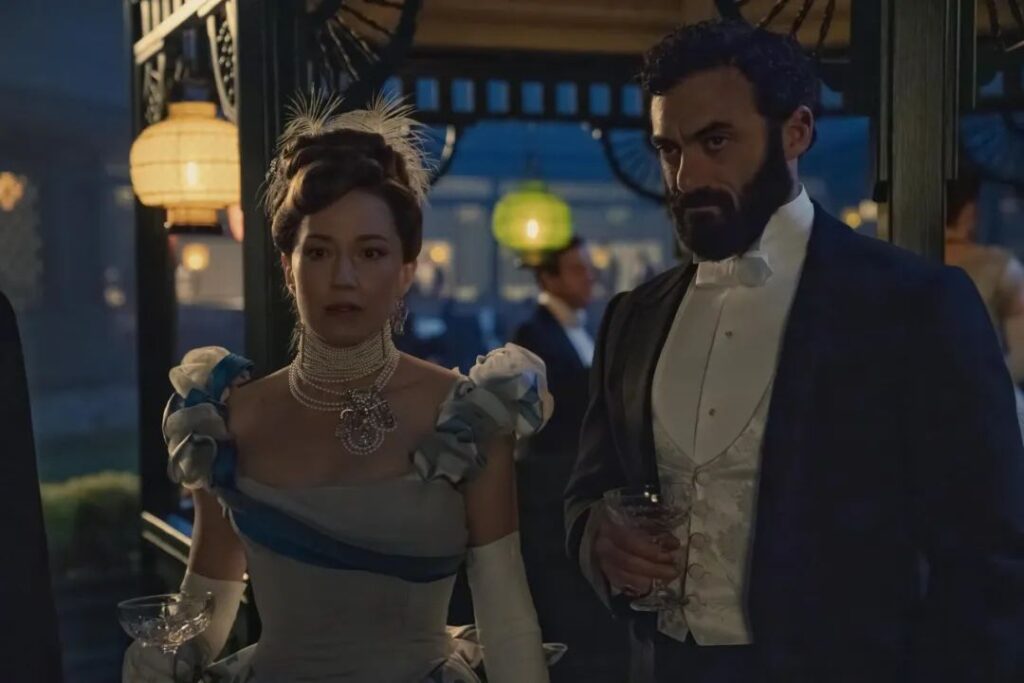
Upon closer observation, one can discern distinct style differences between old money and nouveau riche. The old money adheres to the British court style, which they consider the authentic aristocratic taste. As you may know, European royalty was in decline at the end of the 20th century, with the British monarchy being one of the stronger survivors. This period coincided with the late Victorian era when the “empire on which the sun never sets” was at its zenith.
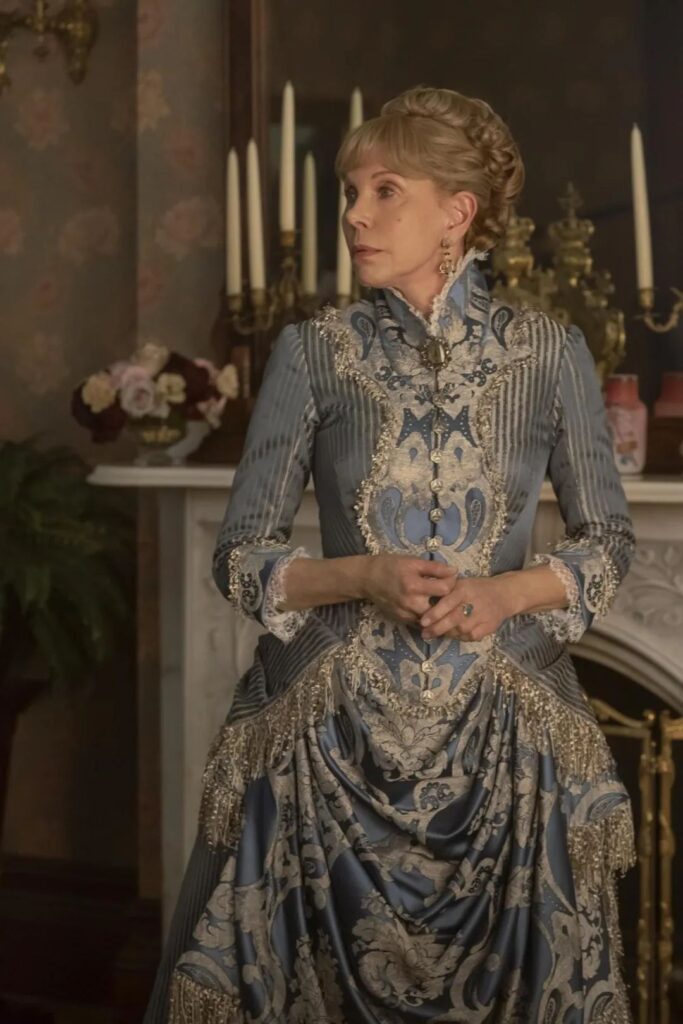

Their houses, art collections, social activities, clothing, and jewelry all exude a British flair. Even their butlers must be English. This is why when Mrs. Russell attempts to host a dinner party for the old money crowd, she has to secretly hire the English butler from Agnes van Rhijn’s household temporarily.
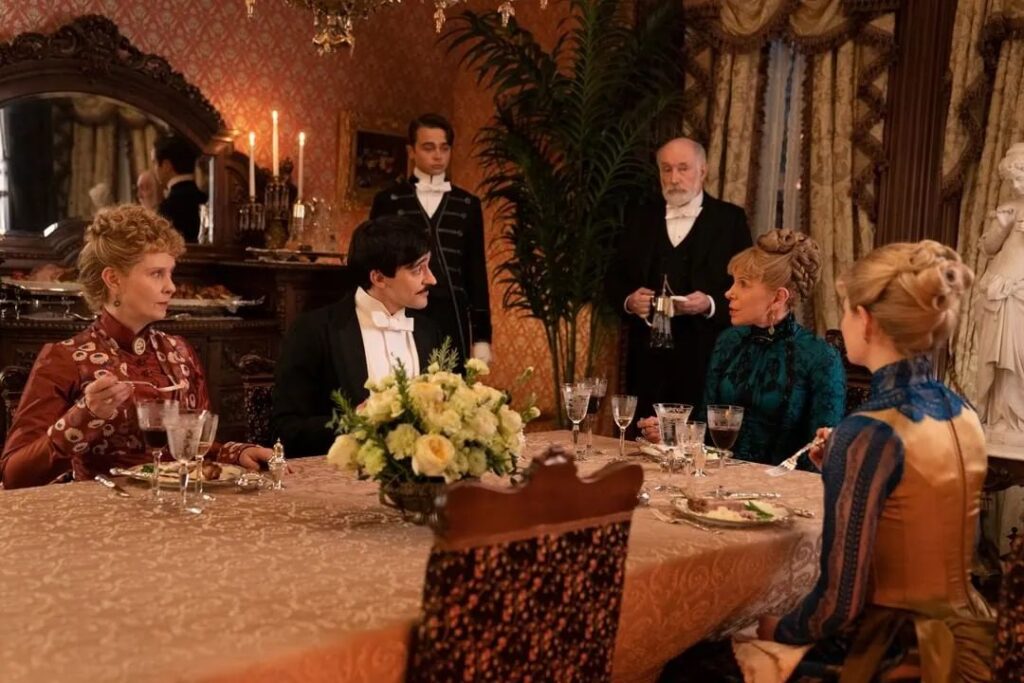
Why is this? Because the nouveau riche aspire to the French court style, employing French staff from butlers to chefs. France was in a period of political transition at the time, with Napoleon III having just ascended to power and Empress Eugénie becoming a fashion icon for European royalty.
The popular jewelry styles of the time were eclectic, incorporating early archaeological revival styles, the neoclassical style championed by Joséphine, and the Art Nouveau movement emerging at the end of the 20th century, all of which found a place in France.
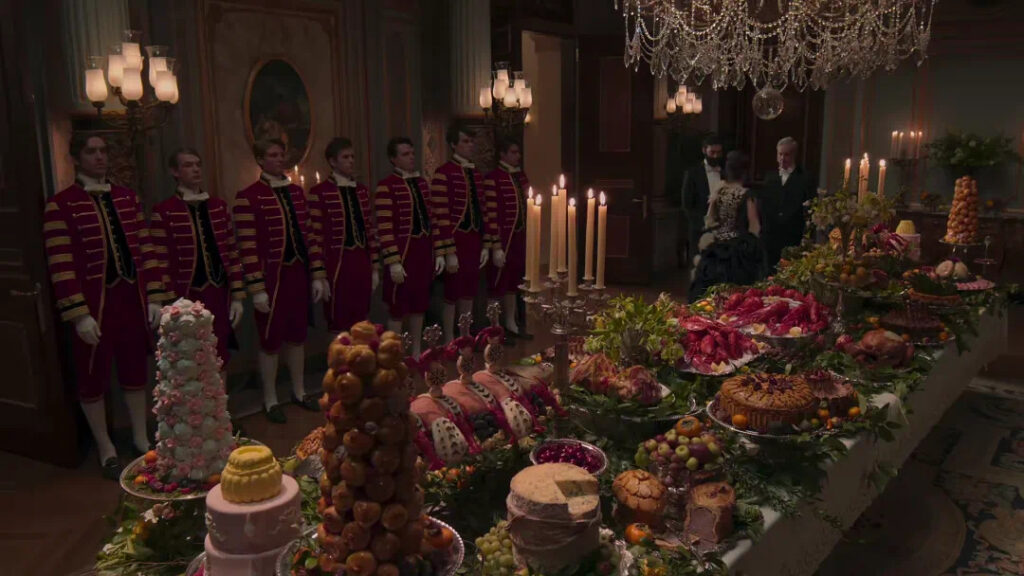
Empress Eugénie, the fashion icon of French and European royalty at the time, favored a traditional luxurious aesthetic with Rococo influences. Of Spanish noble descent herself, she drew inspiration from Marie Antoinette, the queen of Louis XVI. One can glimpse the lavish and romantic designs in her jewelry collection.
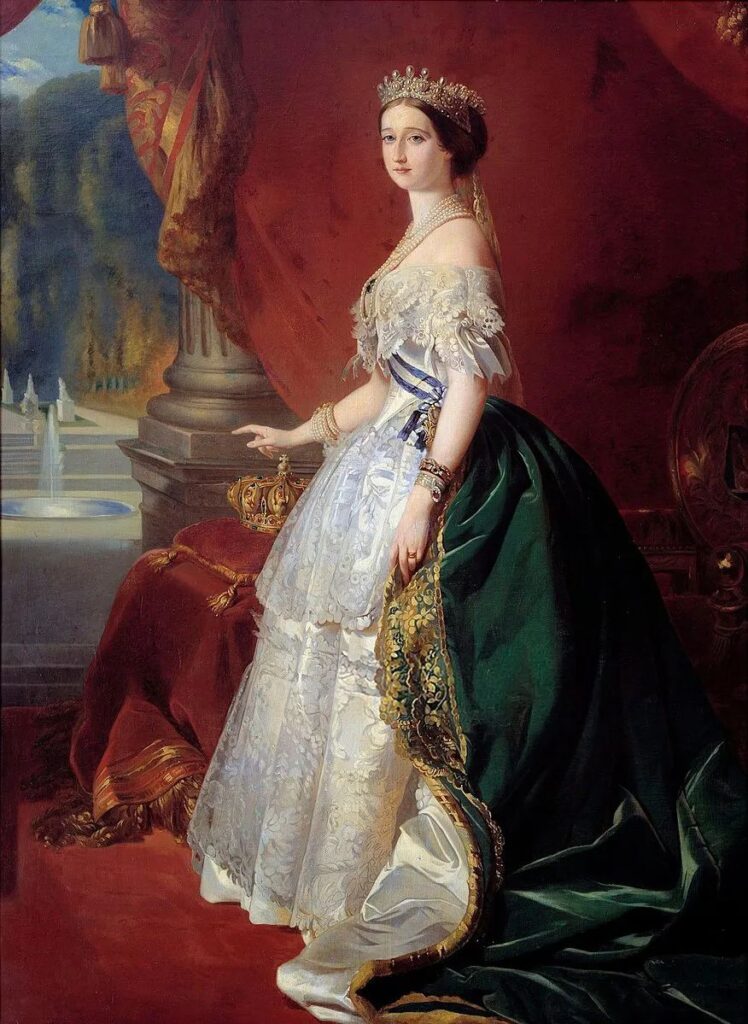
When New York’s nouveau riche attempted to enter high society, they were more drawn to the ever-changing, trendier French styles.
Thus, we see them wearing various popular jewelry styles in the series, with “new” and “change” being their primary objectives. Mrs. Russell wears elaborate garland-style necklaces in the evening and Art Nouveau designs during the day. Her beloved daughter even sports star-shaped hair accessories popularized by the Austrian court.
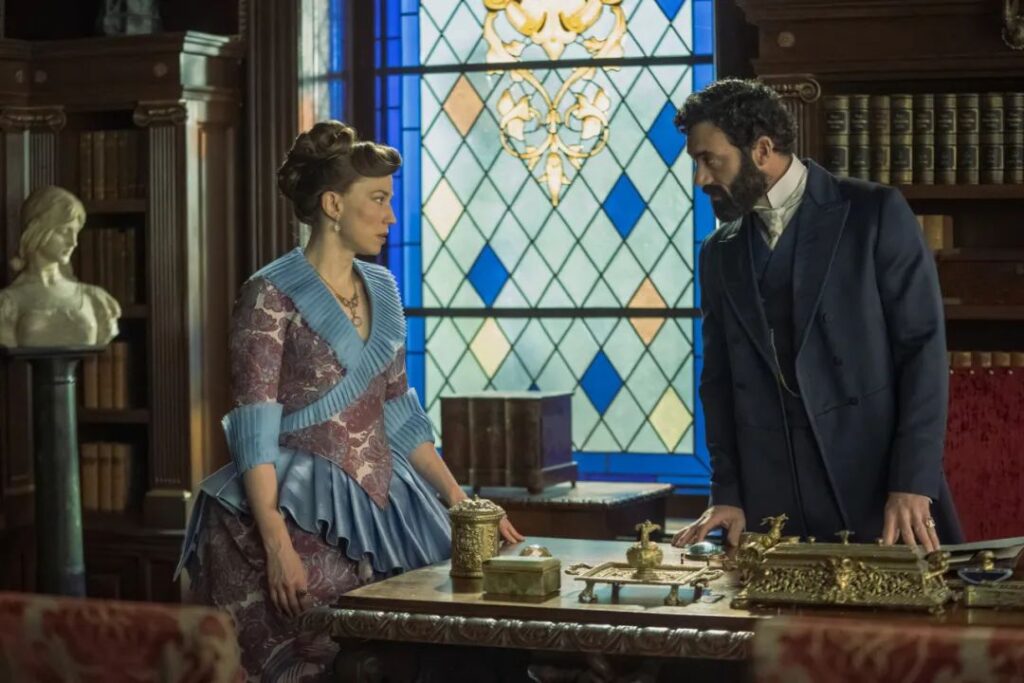
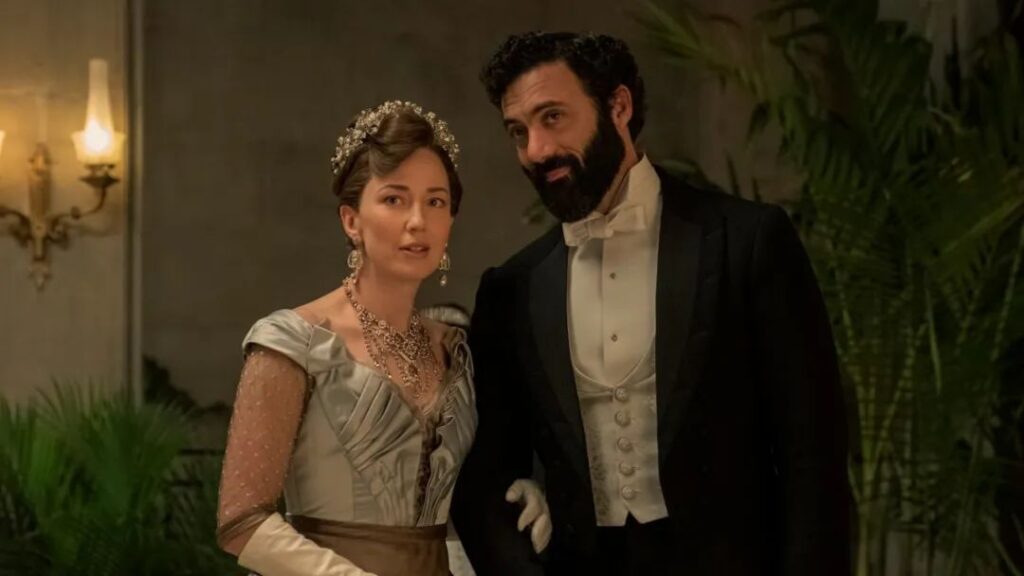
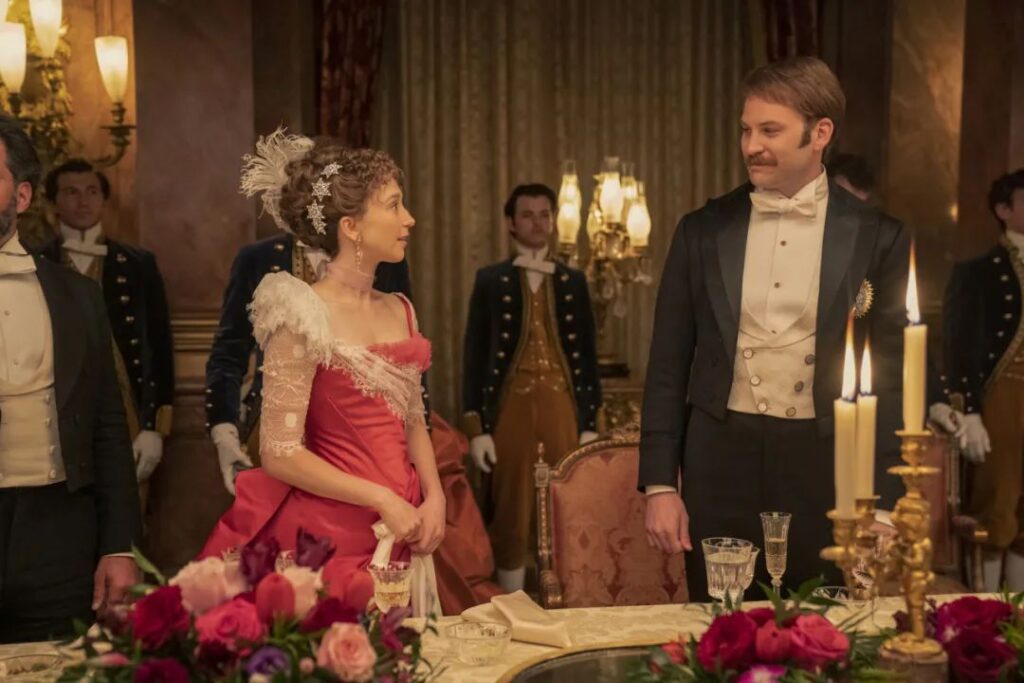
In contrast, the old money characters in the show adhere to British royal etiquette. Their daytime jewelry is small and understated, featuring popular Victorian-era pieces such as cameo brooches and seed pearl brooches, often worn as matching sets with earrings.
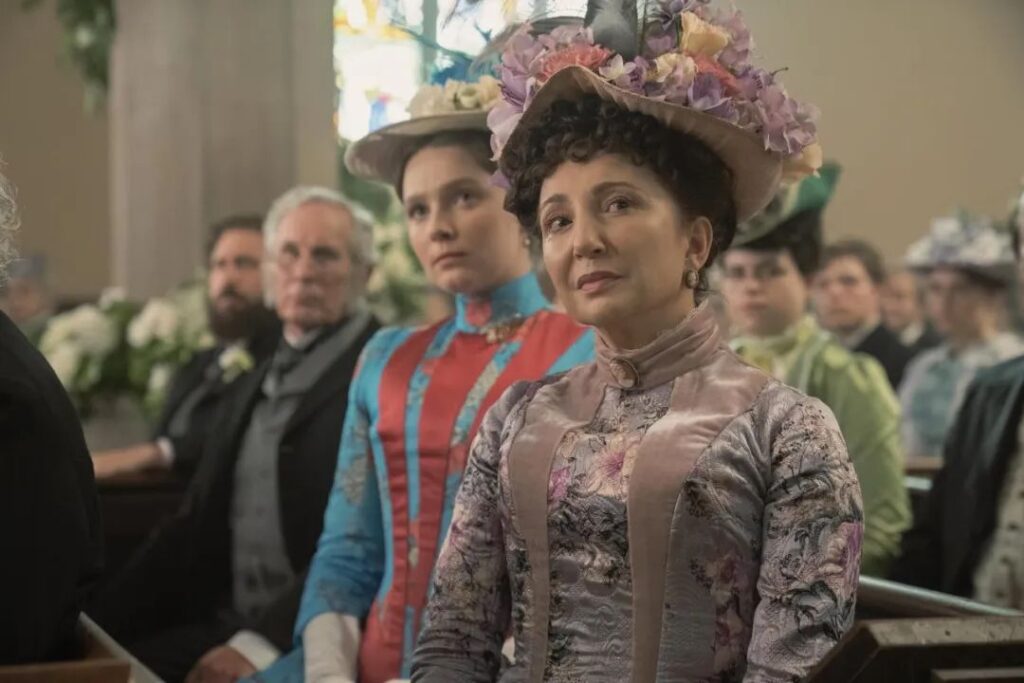
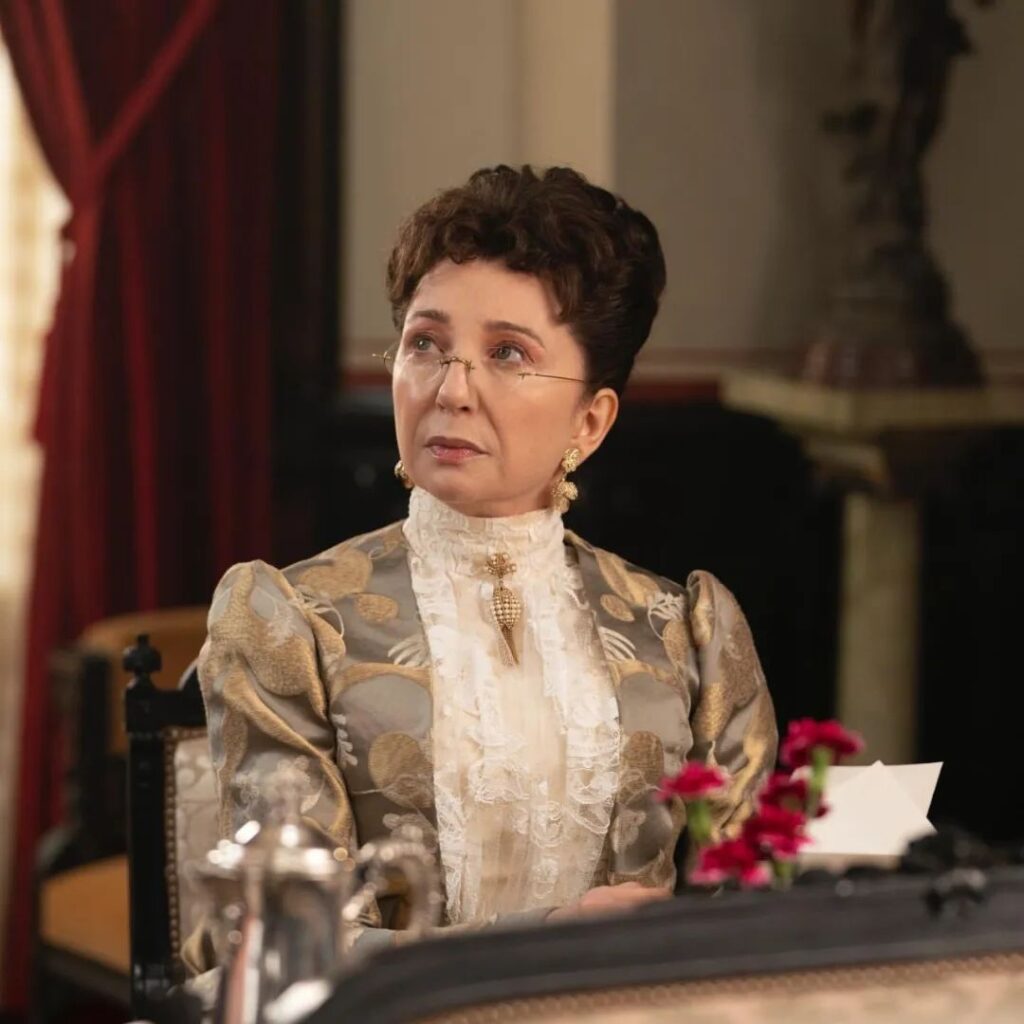
When discussing the jewelry at the forefront of the “Gilded Age,” one must focus on the various “night scenes.”
From dinner parties and balls to lighting ceremonies and opera house battles, the social lives of the wealthy unfold in the evening, providing the perfect stage for an array of magnificent jewelry to make its grand entrance.
The second season of the show particularly concentrates on the historical battle for opera house boxes: the old money, represented by Mrs. Astor, firmly controls the 18 boxes that symbolize status at the opera house; Mrs. Russell, once again excluded, takes a different approach by leading the nouveau riche to build an entirely new Metropolitan Opera House with 144 boxes, becoming the new social hostess.
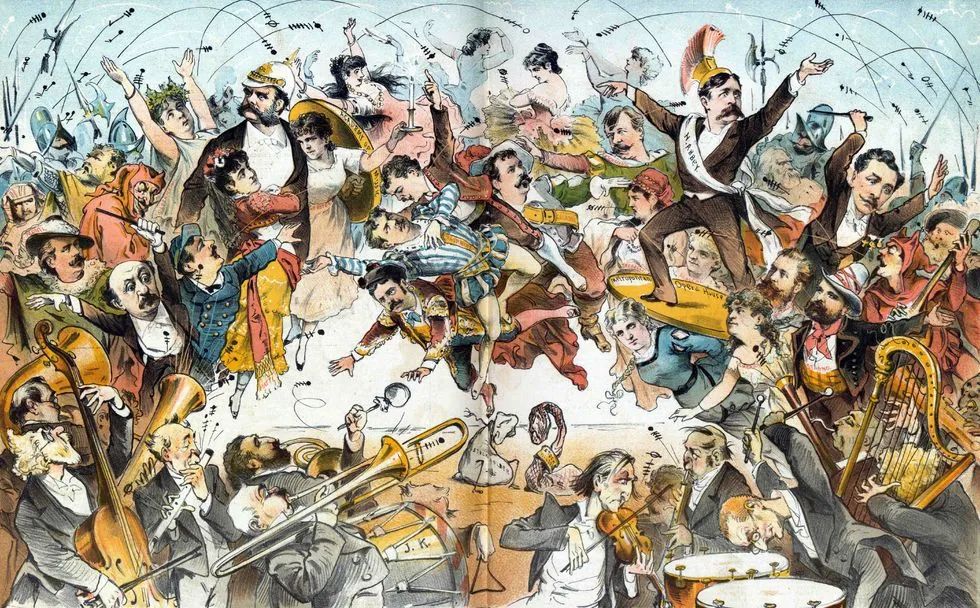
A Must-Have for Both Old Money and New Rich
The Tiara
Although New York may lack nobility, it certainly doesn’t lack tiaras. Indeed, during this era, both old money and nouveau riche in America were obsessed with tiaras. Entering a social event without a tiara was considered embarrassing.
Interestingly, the widespread popularity of tiaras can be attributed to the Napoleonic dynasty. Napoleon’s reverence for royal power made tiaras an essential status symbol in high society at the time.
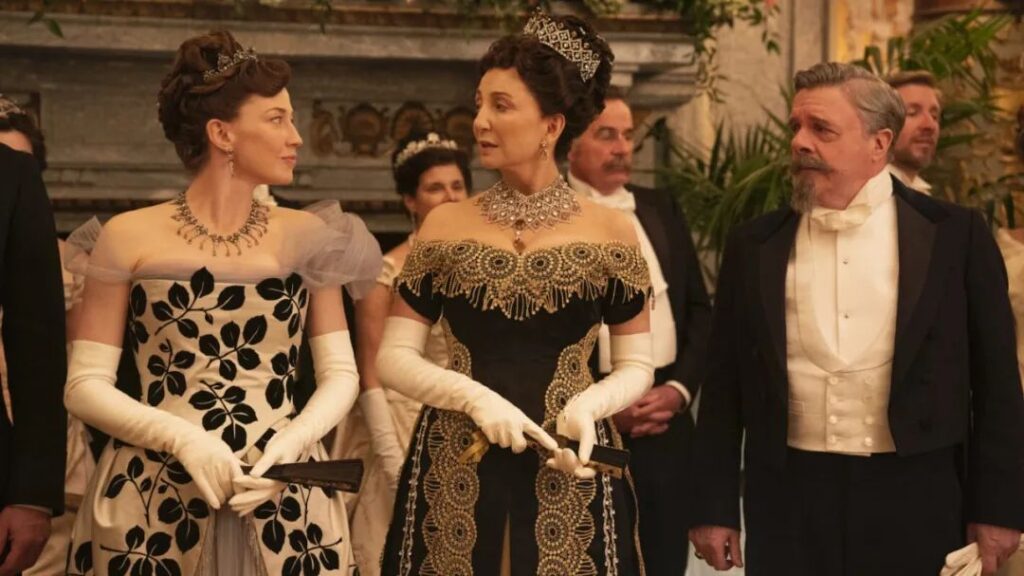
However, the tiara styles popular during the “Gilded Age” followed British trends, mostly in traditional Victorian style, later evolving into Edwardian style.
You know, delicate, intricate, and ornate designs. One rarely sees the cameo tiaras that Josephine once loved. The editor boldly speculates that for American wealthy individuals, the combination of platinum and diamonds was evidently more brilliant and luxurious than carved agate or the like!
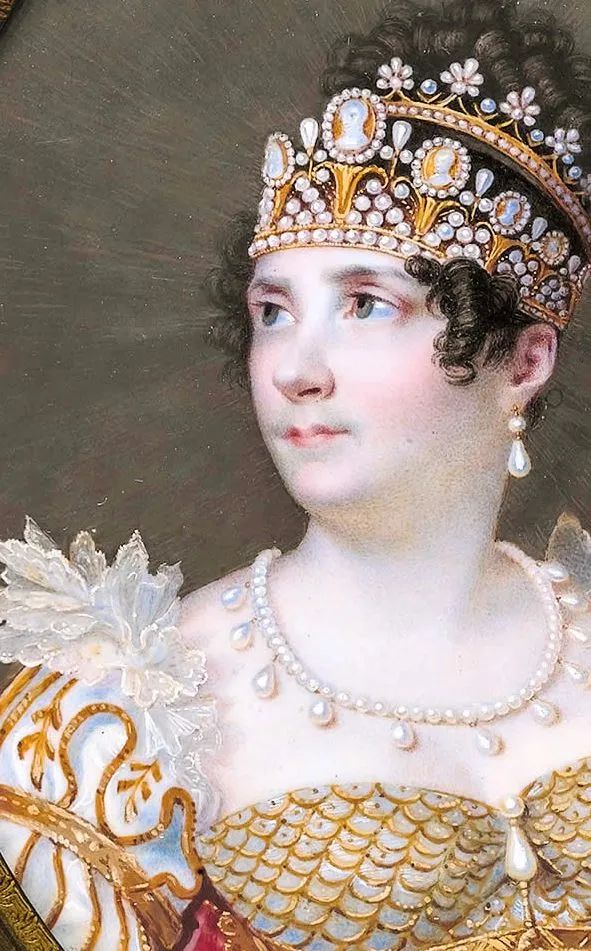
In the final battle of “The Gilded Age” Season 2, everyone chooses to attend the performance at the new Metropolitan Opera House invested in by the nouveau riche. You can see the triumphant Mrs. Russell wearing a very dazzling diamond tiara.
Does it look familiar? It’s clearly inspired by the tiara Fabergé designed in 1890 for the Duchess of Leuchtenberg, using diamonds that Tsar Alexander I had given to Josephine.

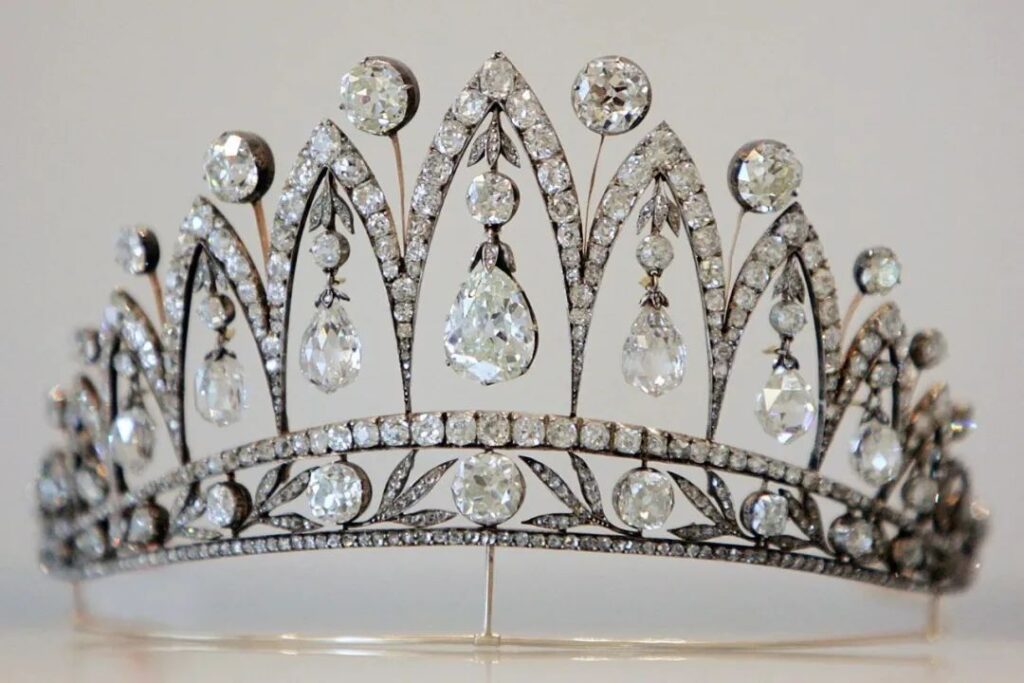
The Ultimate Choice for Flaunting Wealth
The Stomacher Brooch
Has Mrs. Astor admitted defeat? Perhaps it’s just a temporary concession. According to a Washington Post article reporting on the opera’s opening night, Mrs. Astor wore a white gown adorned with black ribbons, a tiara, a “diamond belt,” and a necklace. The centerpiece of her entire ensemble was a large diamond bow brooch decorated with two long tassels.
You read that correctly—this stomacher brooch once belonged to Empress Eugénie, which was sold at the French Royal Jewelry Auction in 1887. For the upper-class ladies of the Gilded Age, jewelry pursued three things: the finest gemstones, fashionable designs, and royal provenance. Of course, achieving all three at once was most desirable!
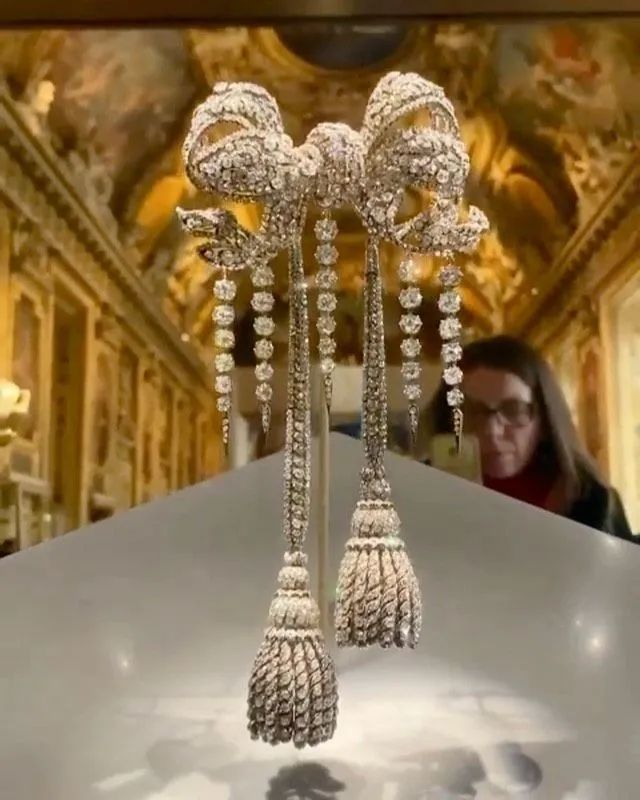
Mrs. Astor maintained her status as the “Queen of New York Society” with this spectacular stomacher brooch. Indeed, this “breastplate-style” brooch was designed specifically for the tight corsets of the time and could decorate the entire abdomen, hence its alternate name “belly pin.”
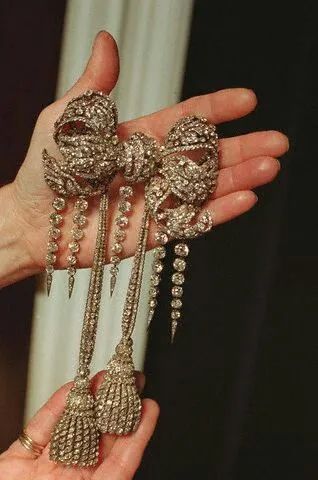
You might think these luxurious brooches are only suitable for the era of tight corsets and large hoop skirts, but the British Royal Family doesn’t see it that way. Queen Elizabeth II often wore the stomacher brooch inherited from Queen Mary, albeit in a more understated manner.

Camilla, the current Queen Consort, also appeared wearing a stomacher brooch this month. This is a piece of jewelry that no one has seen before, reportedly belonging to Queen Elizabeth. Many royal experts speculate that it might be one of the pieces from Mrs. Greville’s bequest. Its luxurious design and lavish use of materials indeed align with Mrs. Greville’s typical taste.
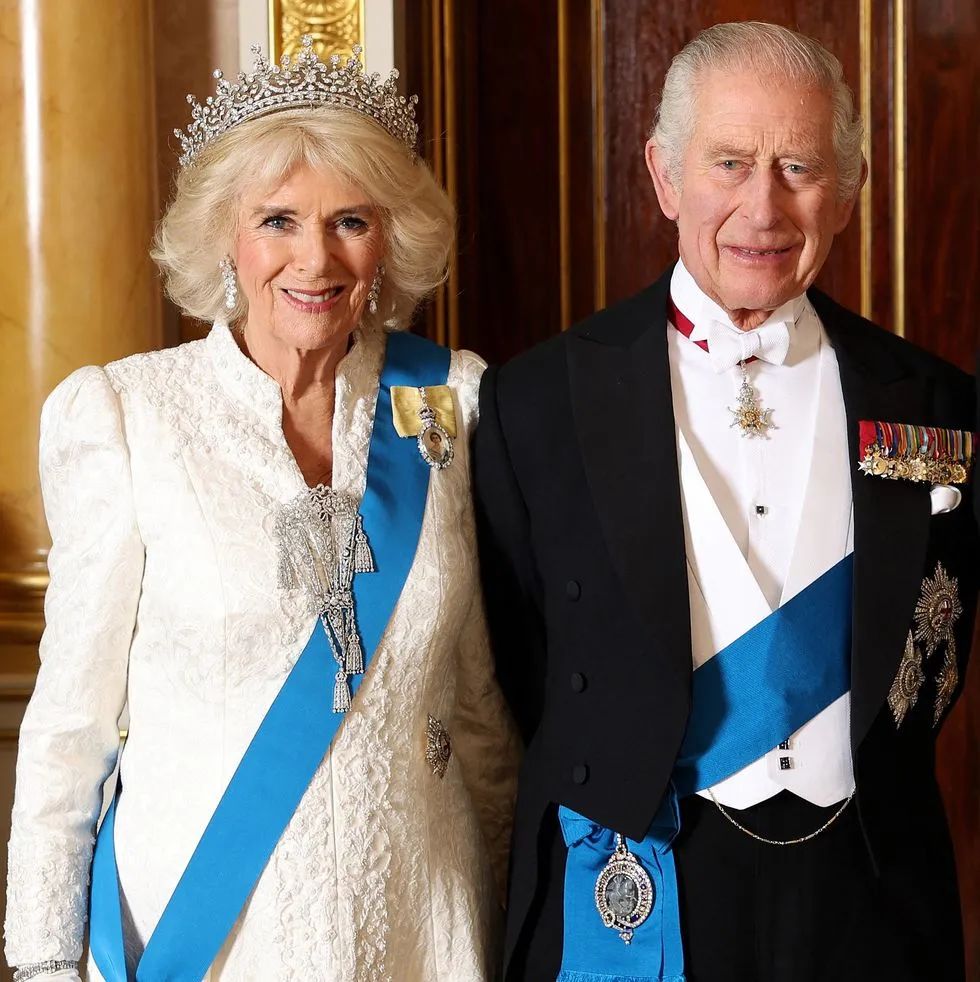
The Indispensable Choker Necklace
Another popular item in the “Gilded Age” was the choker necklace. Because Queen Alexandra, wife of Edward VII, adored this style, layers of pearl choker necklaces often merged with stomacher brooches, creating a dazzling effect from neck to waist.
Here we should mention Mrs. Russell’s pearl collection. She, of course, also owns jewelry that meets all three criteria mentioned earlier. This nouveau riche character is based on Mrs. Alva Vanderbilt, who collected a pearl necklace that once belonged to Catherine the Great.
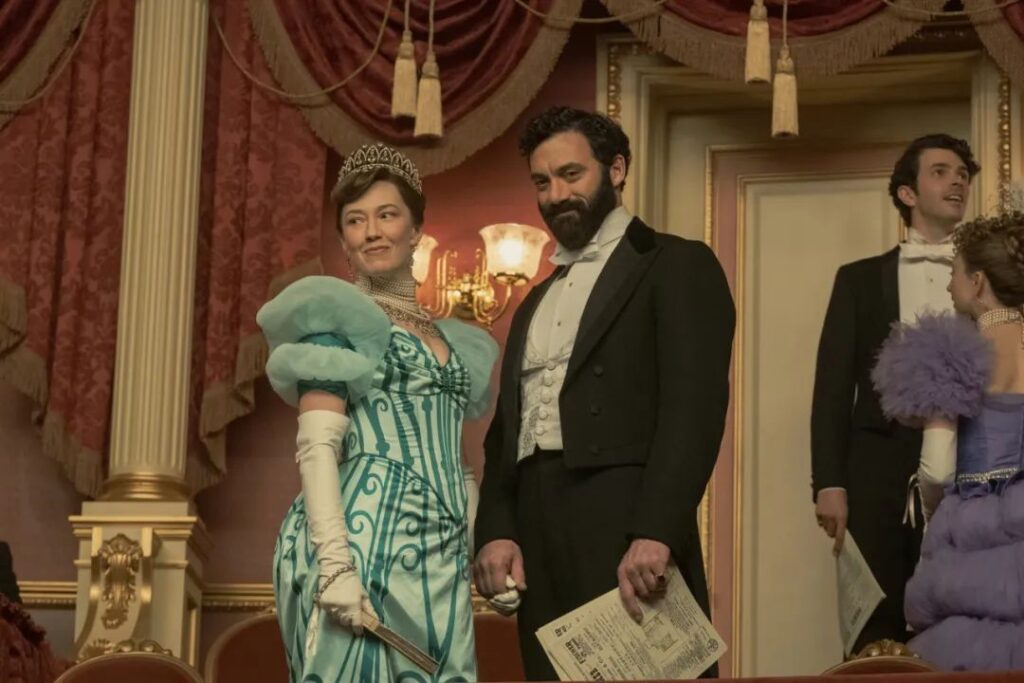
In real history, Alva Vanderbilt was truly a remarkable woman. She used her husband’s wealth to “revolutionize” New York high society, bringing the nouveau riche onto the social stage. Later, when her husband was unfaithful, she boldly divorced him and, armed with evidence of adultery, took him to court to secure a substantial alimony.
She then took her daughter, Consuelo Vanderbilt, to England and successfully married her to the Duke of Marlborough, gaining a noble title and changing their social status. Remarkably, in her later years, she became a women’s rights advocate, strongly supporting voting rights for American women and Black women. She can be considered a pioneering figure of that unique period of change.
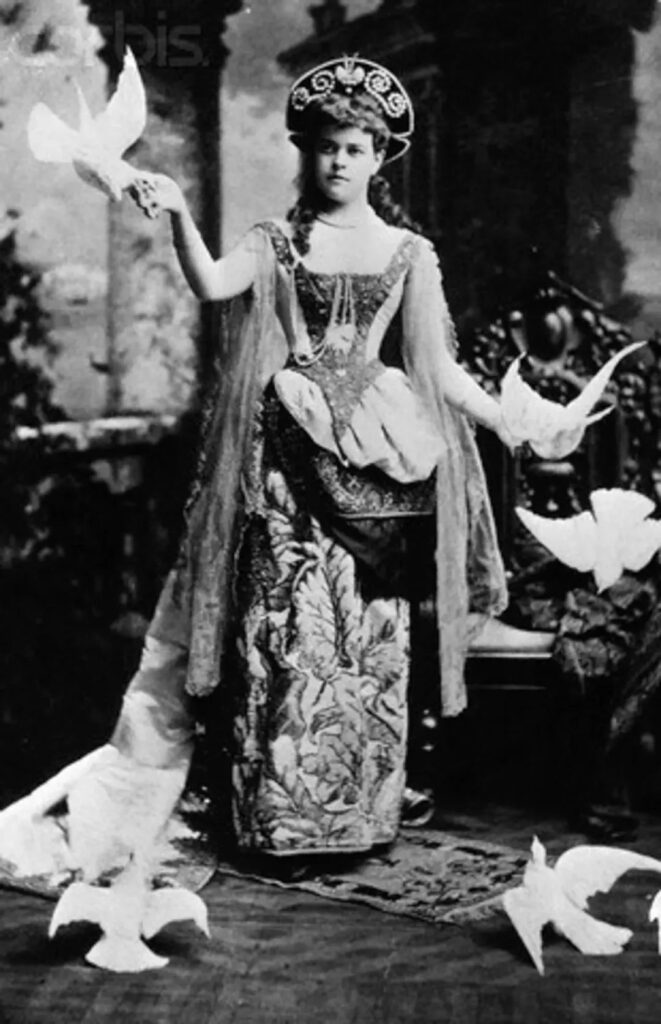
Her daughter couldn’t understand her mother’s actions. She clearly didn’t love the Duke of Marlborough, but Alva Vanderbilt loved her daughter dearly and arranged a secure future for her, giving her entire pearl collection as part of Consuelo’s dowry.
In her autobiography, Consuelo Vanderbilt wrote: “Choker necklaces were very fashionable at the time. Mine was made of pearls, with nineteen rows. My mother gave me all her pearls. Among them were two rows of exquisite pearls that once belonged to Catherine the Great and Empress Eugénie.”
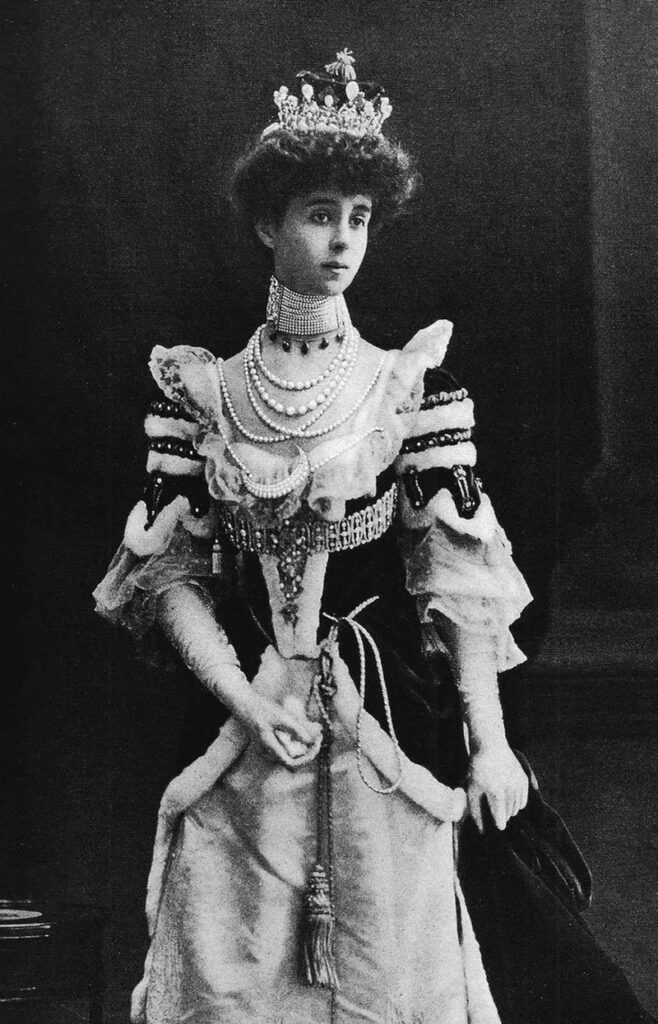
Although “The Gilded Age” depicts a lively battle between old money and nouveau riche, their taste in tiaras was actually quite similar. The jewelry in the show is, of course, not real gold and silver, but this period in history was indeed an era of frequent jewelry masterpieces. Let’s take a look at what treasures the real-life icons of the “Gilded Age” collected.
The Duchess of Marlborough’s Boucheron Tiara
As mentioned earlier, Consuelo Vanderbilt, after becoming the Duchess of Marlborough, naturally owned her own tiara. It’s worth noting that she was one of the four noblewomen who personally attended Queen Alexandra during her coronation ceremony. How could she attend without a proper tiara?
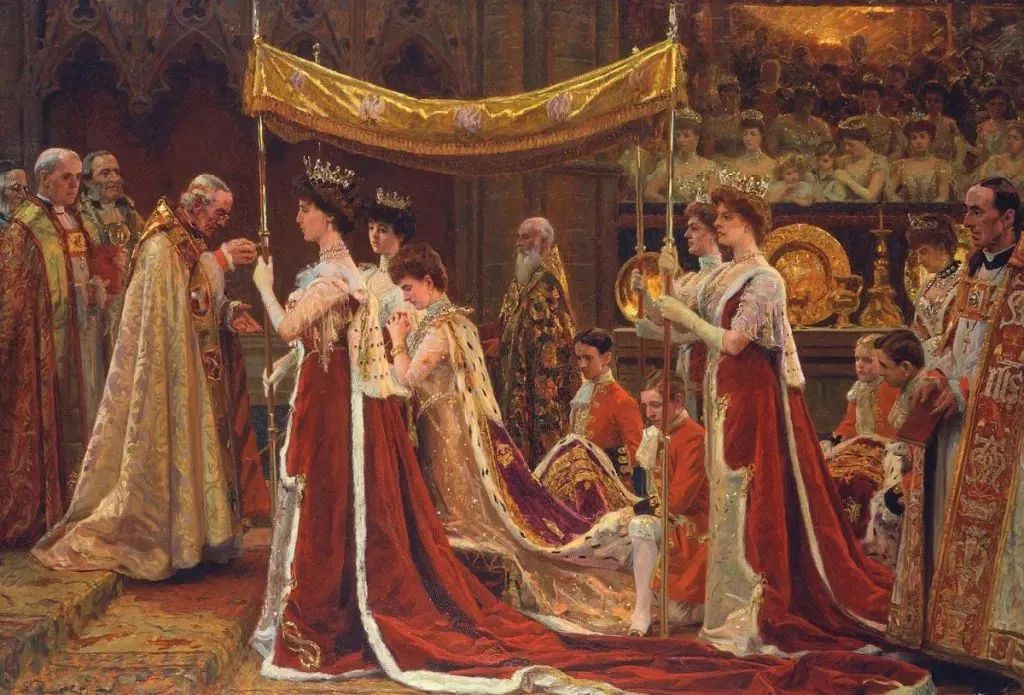
At her wedding, her father purchased this tiara from Boucheron as a wedding gift. However, this tiara was merely a perfect prop for her role as a duchess. When their marriage collapsed, she promptly sold the tiara.
The New York Times report on this auction described the tiara as: “A magnificent and splendid tiara, designed with leaf and scroll patterns, set with 19 pear-shaped diamonds of excellent quality.”
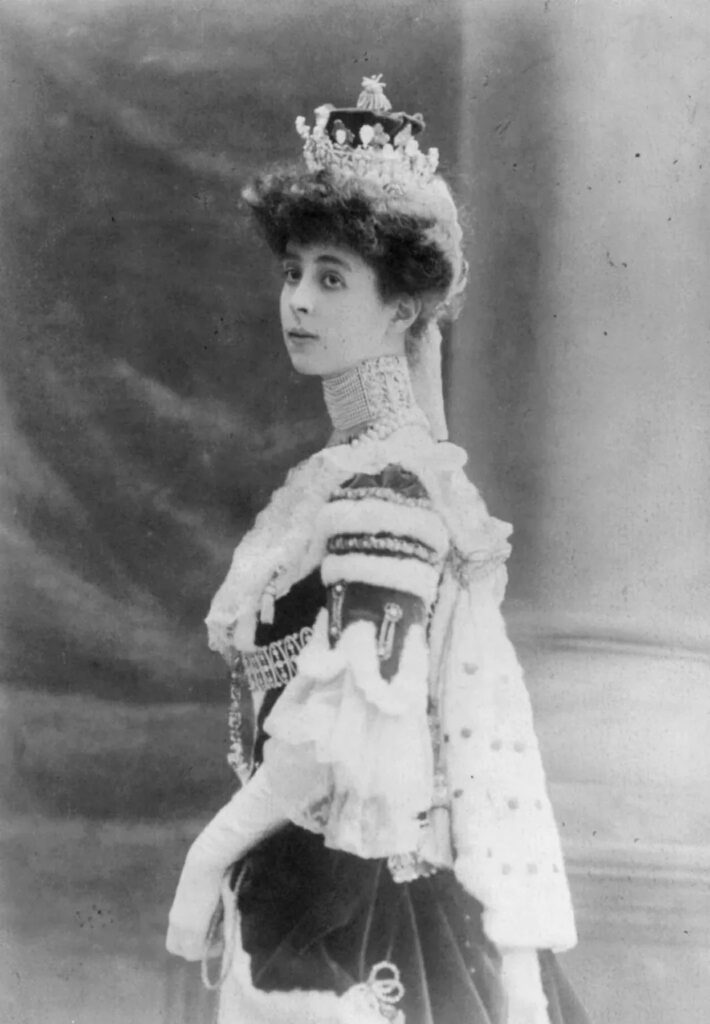

The Baroness Curzon’s Boucheron Tiara
Consuelo Vanderbilt was known as a prime example of a “dollar princess,” representing the marriages between wealthy American heiresses and impoverished British nobility, a characteristic “product” of the Gilded Age. Of course, not every bride was as unfortunate, and there were occasional happy examples, such as Baroness Curzon, Mary Victoria Leiter, whose father owned the Marshall Field department store chain.
Mary married George Curzon, a British nobleman and Conservative politician. Their marriage began as an exchange of interests, but Mary greatly admired her husband’s talents and supported him wholeheartedly. Soon, this like-minded couple was rewarded: Edward VII appointed George as Viceroy of India and elevated him to Baron. Thus, Mary became the Vicereine and accompanied her husband to India.
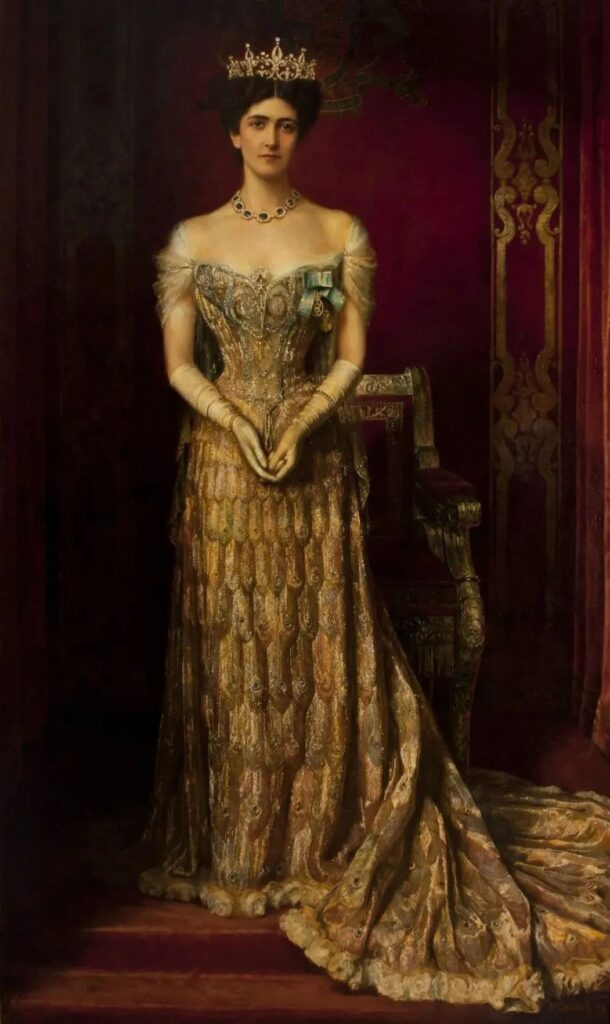
In India, she represented the face of the British Empire, making luxurious jewelry an essential prop. She wore a tiara of her own commission, created by Boucheron in 1898, featuring an elaborate and striking diamond lily design set in platinum.
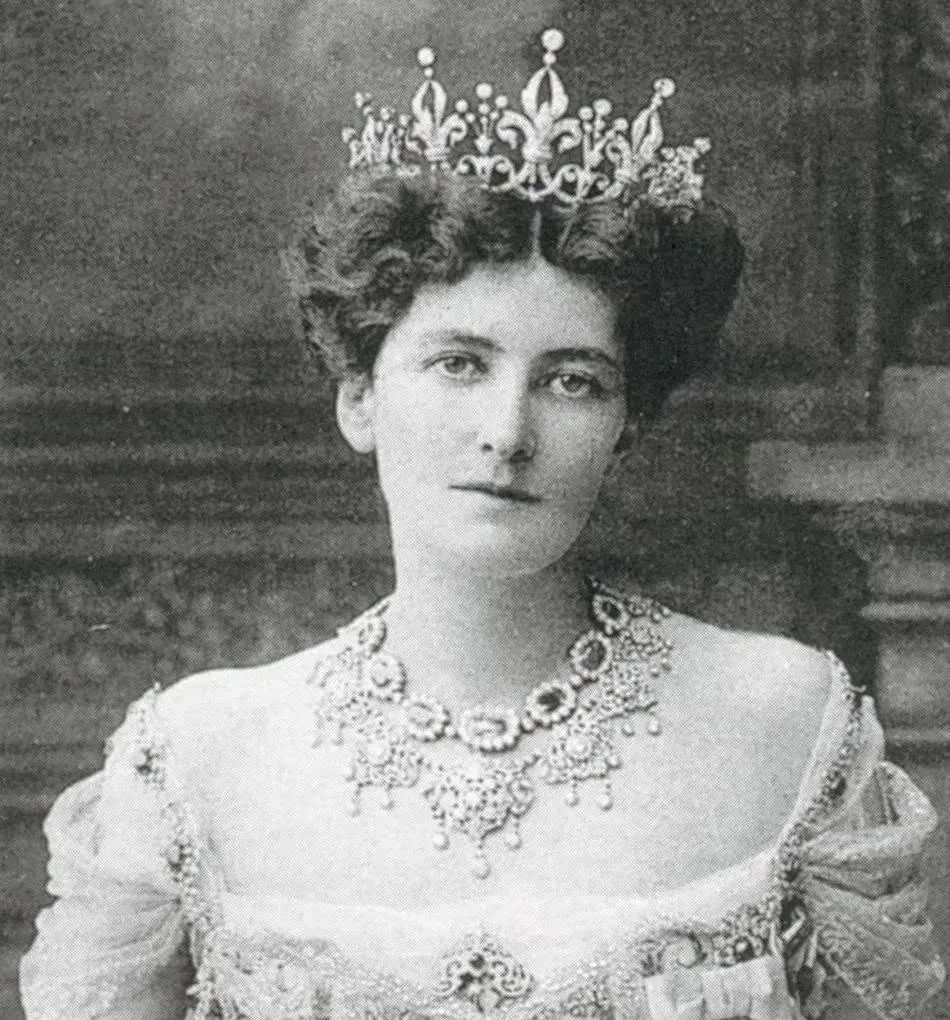
The Countess of Essex’s Cartier Tiara
The Countess of Essex, Adele Grant, was also a “dollar princess.” She married the widowed Earl of Essex, George Capell, becoming a Countess and, upon entering court, a favorite of Edward VII. Therefore, when the coronation arrived, she naturally needed a tiara that could stun everyone.
In 1902, she and her husband purchased this incredible diamond scroll tiara from Cartier, both magnificent and concise. After her death, the tiara was eventually repurchased by Cartier, becoming part of the brand’s treasured collection.
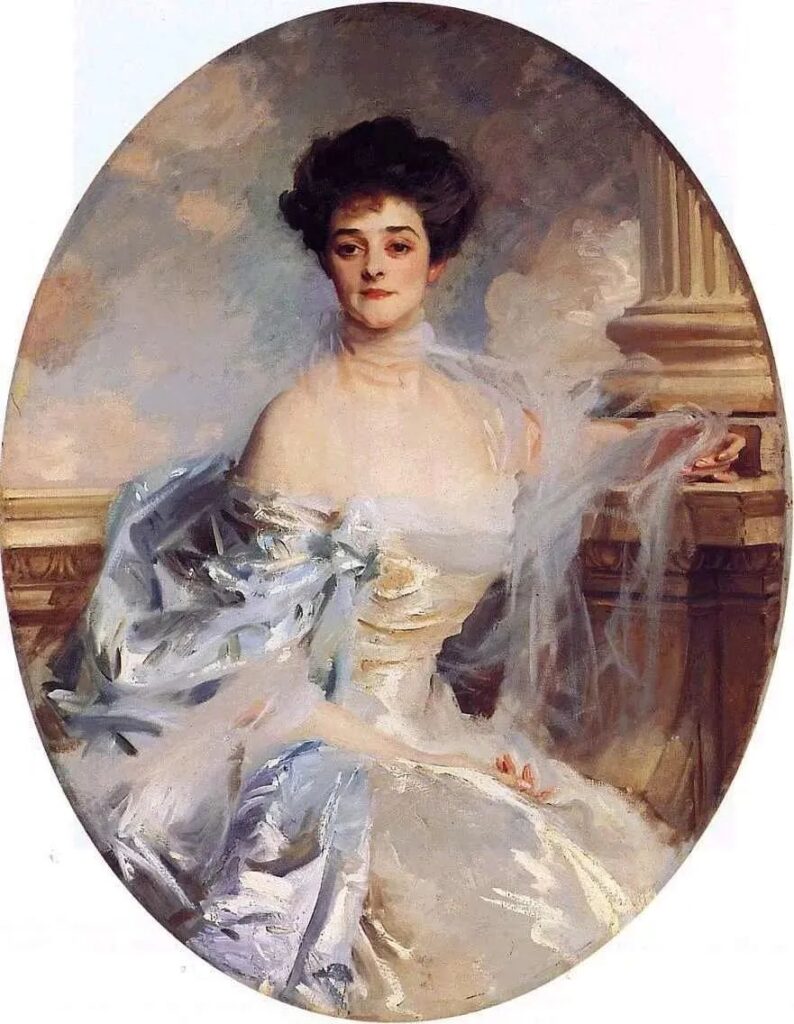
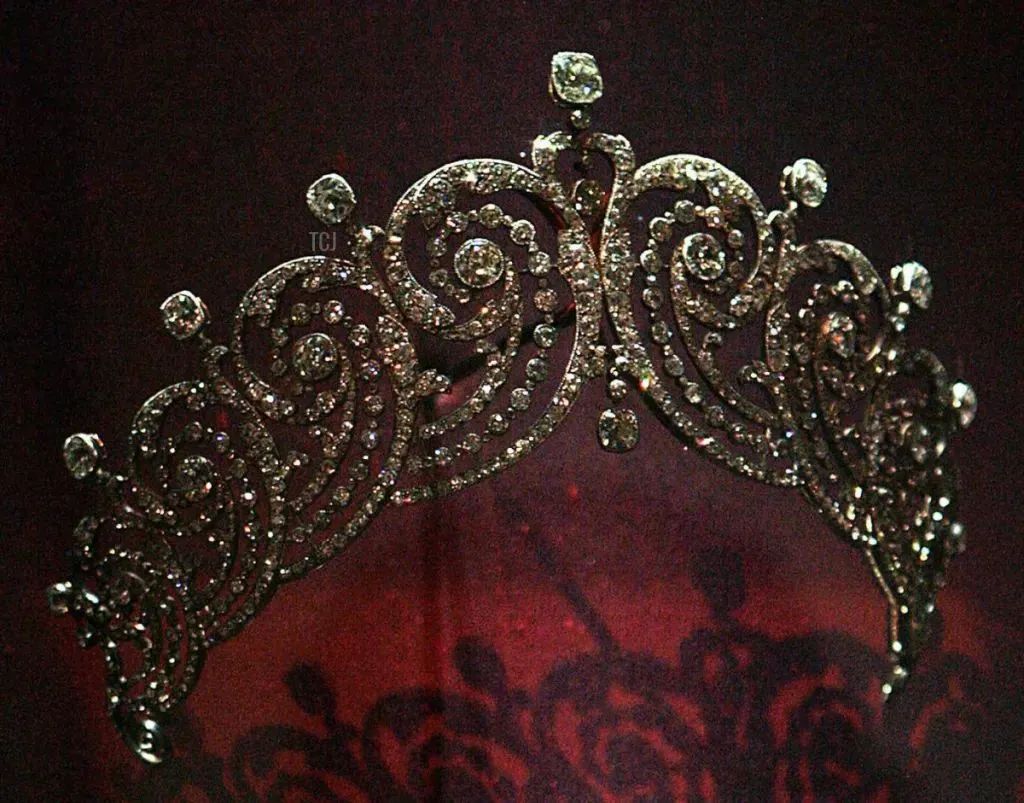
This dazzling tiara wasn’t simply locked away after its repurchase but has been lent by the brand to new generations of fashion icons.
For instance, in 1953, Clementine Churchill wore this tiara to Queen Elizabeth II’s coronation ceremony at Westminster Abbey. In 2016, Rihanna wore this tiara on the cover of W Magazine, creating quite a stir. Perhaps someday in the future, we’ll see this tiara make another grand appearance.
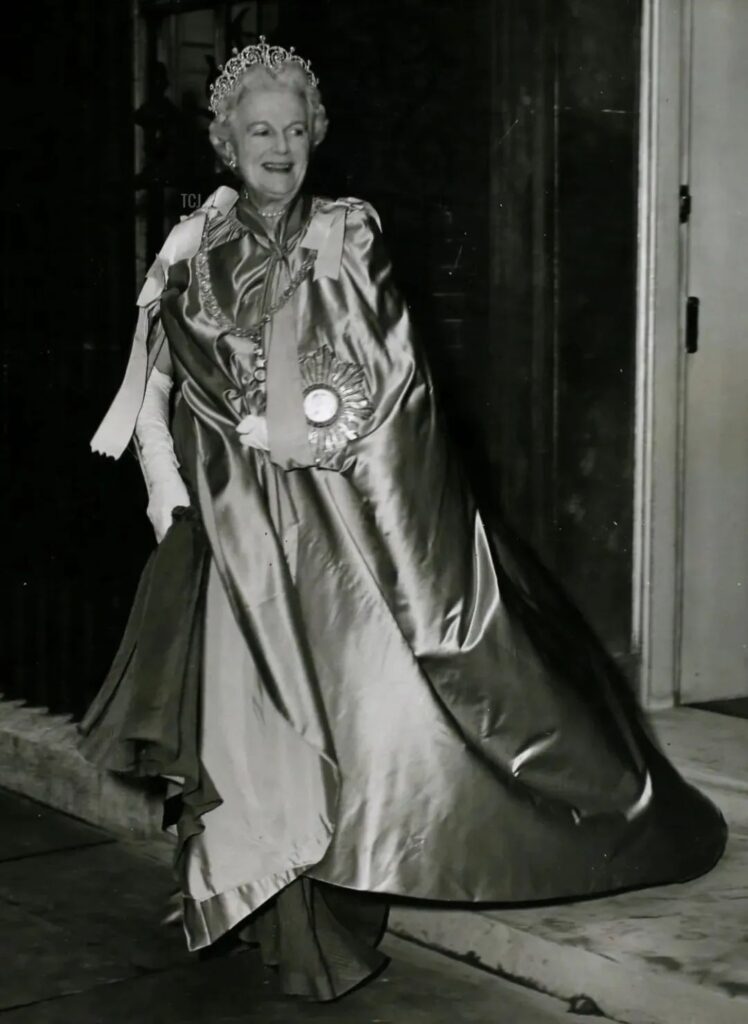
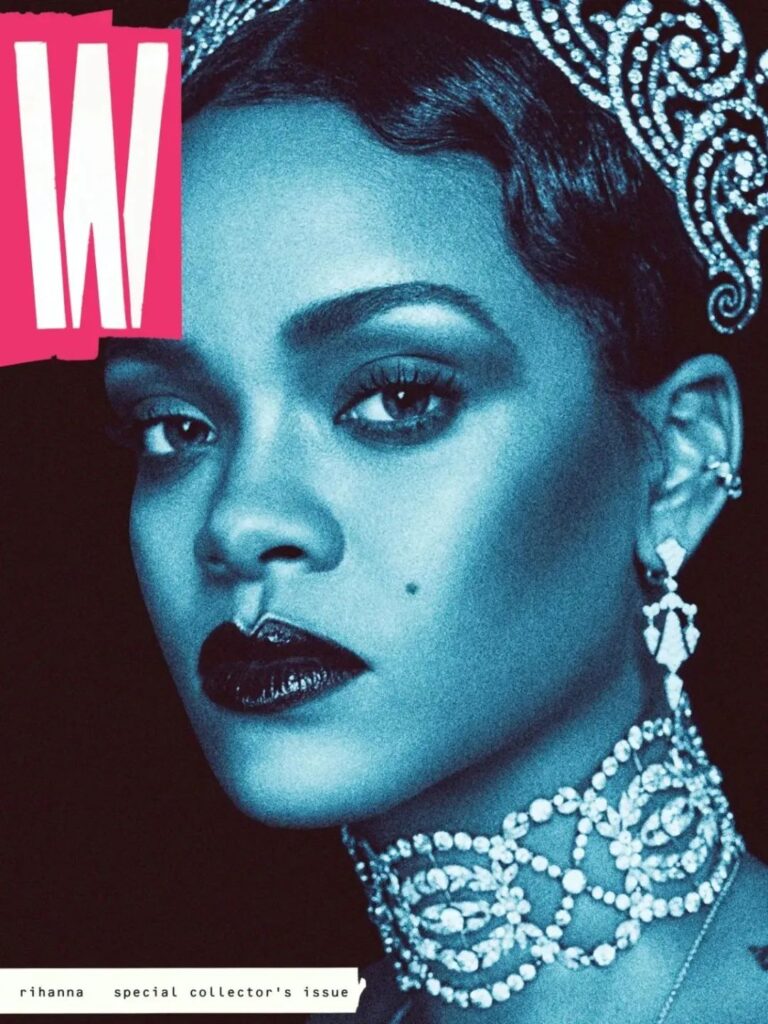
The Duchess of Manchester’s Cartier Tiara
Consuelo Yznaga, the Duchess of Manchester, can be considered one of the first “dollar princesses.”
She was a close friend of Alva Vanderbilt and the godmother of Consuelo Vanderbilt, and she also played a role in arranging the latter’s imperfect marriage. After becoming a duchess, Consuelo Yznaga held no hope for her extravagant husband but perfectly integrated into British high society, becoming the mistress of Edward VII, who was then the Prince of Wales.
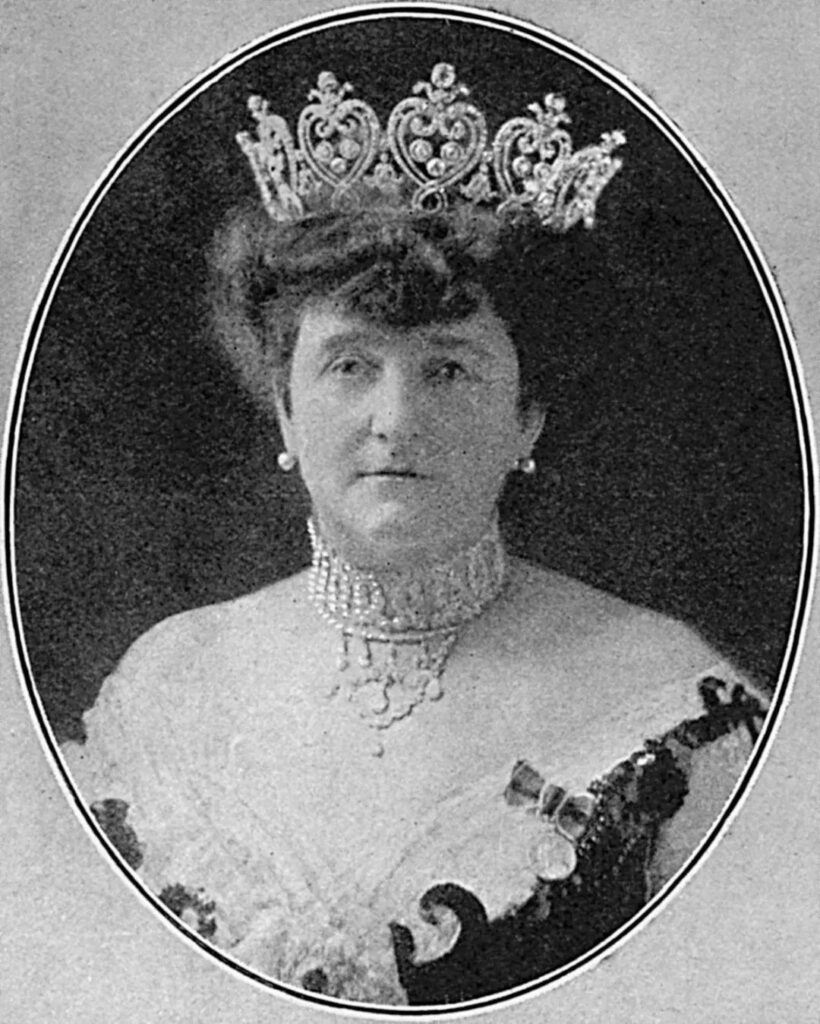
As you might expect, even after her husband’s early death, she remained active in social circles. When the Prince of Wales was crowned, she eagerly commissioned her new tiara from Cartier. This tiara was set with over 1,400 diamonds, all provided by Consuelo herself, and featured a design of flaming hearts and graduated scrolls.
The ends of the tiara had scrolls in the shape of the letter C, representing Consuelo’s name.
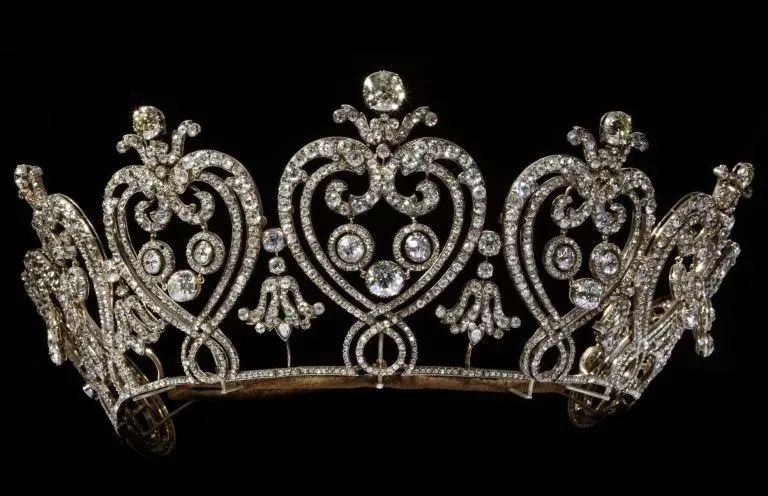
The magnificence of this tiara cannot be fully appreciated unless worn, as its size is truly enormous. After Consuelo Yznaga’s death, the tiara was inherited by her daughter-in-law Helena – a “dollar princess” who married for love. Yes, she eloped to England to marry the next Duke of Manchester.
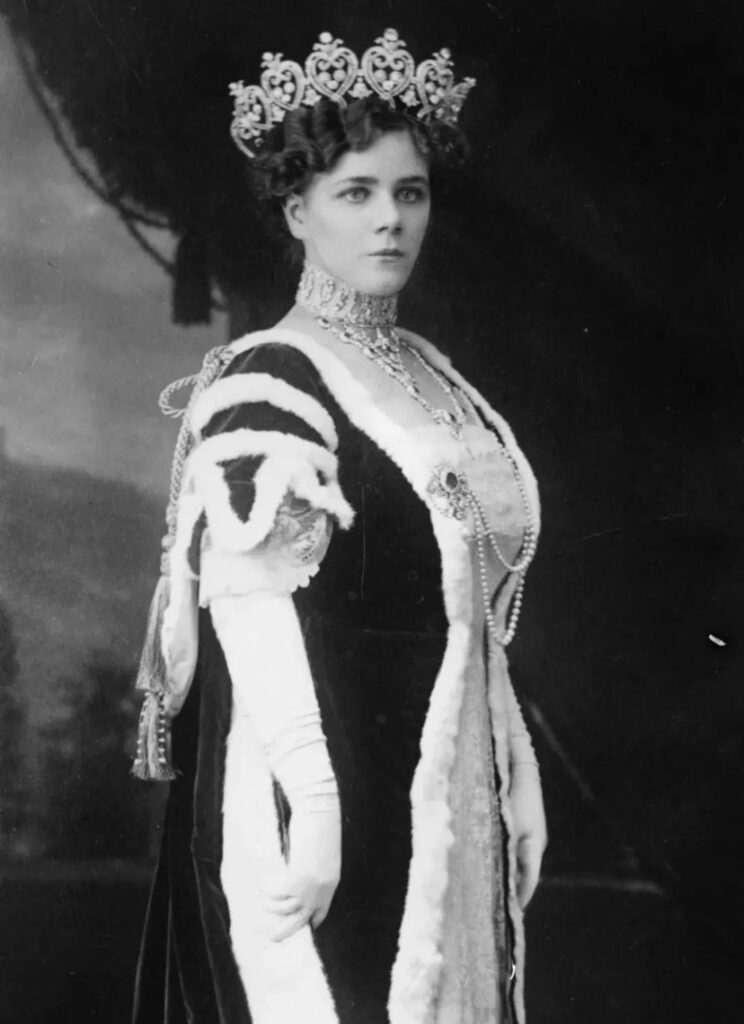
However, extravagance seems to run in the family, as the new Duke of Manchester was also a spendthrift and soon declared bankruptcy. Helena was also a strong-willed woman; when love faded, she promptly divorced and married the Earl of Kintore. This tiara was later accepted by the British government in lieu of inheritance tax and was allocated to the V&A Museum in 2008.
The collections of these four “dollar princesses” are highly characteristic of the Gilded Age – glamorous and ostentatious, emphasizing wealth above all. Of course, they also represent the pinnacle of platinum and diamond craftsmanship of the time. Each tiara achieved a delicate intricacy, refined to the extreme, and dazzling to no end.
Additionally, good news for fans: “The Gilded Age” has just officially announced its renewal for a third season. We gossip-lovers can look forward to more “battles of extravagance,” and naturally, we can expect more jewelry to make appearances. The author is already getting impatient – how about you?
The Gilded Age Season 2: Old Money vs. New Money Clash – A Dazzling Display of Wealth and Jewelry!
Tweet
